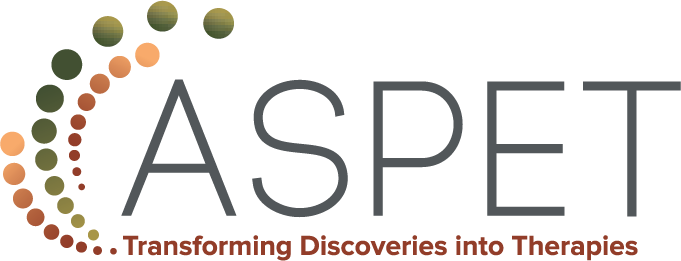This month The Pharmacologist features two new policy briefs written by participants of the 2024 ASPET Washington Fellows program. These topics present compelling arguments for policy improvements on an issue of personal importance to each Fellow. The policy briefs below discuss promoting housing among the homeless with substance abuse disorder and the federal legalization of Fentanyl test strips.
Promoting the “Housing First” Framework to Combat Homelessness in Populations with Substance Use Disorders
By Makenzie Patarino, University of Washington in Seattle
Executive Summary
 Homelessness is a longstanding issue that affects over half a million people in the U.S. and costs taxpayers’ billions of dollars annually. Unhoused individuals who have a substance use disorder (SUD) face added challenges and tend to be chronically homeless. Previous solutions have often been ineffective and undesirable. The Housing First (HF) framework has shown success on smaller scales and offers a promising solution, especially for those who use substances. To combat homelessness and its associated costs, local policymakers should (1) disseminate information on the efficacy of HF programs, (2) combine future research with implementation of HF programs to better utilize funding dollars, and (3) create a centralized tool to help access successful local HF programs.
Homelessness is a longstanding issue that affects over half a million people in the U.S. and costs taxpayers’ billions of dollars annually. Unhoused individuals who have a substance use disorder (SUD) face added challenges and tend to be chronically homeless. Previous solutions have often been ineffective and undesirable. The Housing First (HF) framework has shown success on smaller scales and offers a promising solution, especially for those who use substances. To combat homelessness and its associated costs, local policymakers should (1) disseminate information on the efficacy of HF programs, (2) combine future research with implementation of HF programs to better utilize funding dollars, and (3) create a centralized tool to help access successful local HF programs.
Background
Homelessness is a pressing and bipartisan concern, with 650,000+ people in the U.S. currently experiencing homelessness. Rates increased 12% across the U.S. just in 2023, largely as a result of the affordable housing crisis. Nearly one third of the unhoused population are “chronically homeless” and have high rates of complex mental and physical disabilities, history of trauma, and substance use. Not only is homelessness extremely traumatic for those who experience it, but it can affect communities by negatively impacting the availability of healthcare resources and the workforce, while increasing involvement with the criminal justice system and the use of tax dollars.
Typical band-aid solutions involve temporary shelters, emergency services, law enforcement, and incarceration. These are expensive, disruptive to the community, and can trigger additional trauma (which then further exacerbates behavioral and mental health issues). Those with SUDs often face unique barriers. Experiences with law enforcement or emergency room visits can lead to mandated treatment or involuntary hospitalizations, and homeless shelters sometimes have rules requiring abstinence from substances which is not always feasible.
The cycle of homelessness, being denied entry or removed from shelters, interactions with law enforcement and involuntary hospitalizations creates a toxic cycle of instability that can be hard to break out of. Current estimates put the annual cost to society for one unhoused person on the streets at around $40,000. New approaches are needed to address this pressing issue
The Housing First framework has started to gain recognition as a valuable and efficacious approach. HF asserts that to combat homelessness, people must be stably housed before they can address other issues. This means that housing is the first intervention to be offered to unhoused populations, and tenancy should not have any prerequisites or requirements. Essentially, housing comes first–before finding a job, tackling financial issues, addressing harms associated with substance use, or engaging in treatment. In this framework, stable and permanent housing is the most critical step in rehabilitation. HF emphasizes that supportive services (such as mental health or SUD treatment) should be offered after people are placed in permanent housing to help maintain stability but are not required.
A number of research studies found the HF intervention is effective and provides a number of benefits to those experiencing homelessness as well as society. Multiple reports showed a decrease in monthly costs associated with each unhoused person by around 50% while enrolled in a HF program, with room for even further economic benefit if participants were able to leave the program and become financially independent. This is due to decreases in use of emergency services, hospitalizations, number of days spent in jail, and total number of jail bookings. Housing retention after enrollment in HF programs was remarkably high, around 90% after two years in multiple studies across the U.S. and worldwide. These numbers hold true in chronically homeless populations that had previously experienced extremely unstable housing conditions for years prior to the intervention. Studies also showed that substance use and related harm tends to decrease upon enrollment in HF programs, despite no requirement for treatment or abstinence.
HF programs show economic, societal, and health-related success backed by scientific evidence. To accomplish this in unhoused populations with SUDs has historically been challenging in models based on temporary shelters, involuntary treatment, and mandated abstinence. While the main driver of the homelessness crisis is the lack of affordable housing (which must also be addressed, but is outside the scope of the current brief), strategies must be put in place in the meantime. To promote the Housing First framework in populations with SUDs, we suggest the following policy options to local officials across the U.S.
Policy Recommendations
- Disseminate information on the efficacy of Housing First programs. There has been immense work done to shape the beliefs behind HF programs, lay its foundation, and conduct research to show its effectiveness. However, not all relevant parties are aware of the framework and its merits. It is imperative that unhoused populations, law enforcement, first responders, treatment centers, and landlords learn about existing programs in the community that employ the HF approach. This will encourage more participation in programs that are proven to work, and lead to more support and traction.
- Combine future research with implementation of Housing First programs to better utilize funding dollars. Lack of funding is another barrier that may prevent HF programs from gaining recognition and continued success. In addition to pursuing traditional pathways for increased funding, one strategy is to facilitate collaborations between existing HF programs and academic institutions who are conducting research on HF programs. This approach would mean funding dollars go further, as they would be used to help provide housing as well as improve our understanding on different aspects and outcomes of these programs.
- Create a centralized tool that is simple, understandable, and has clear information about how to access effective local Housing First programs. A common concern from those experiencing homelessness is not knowing where to go for help, being confused by the information about potential services, or encountering long wait times and barriers to access services. These can all delay or prevent housing, which can lead to negative interactions with law enforcement or other traumatic events. Creating, implementing, and popularizing HF programs is not enough if unhoused populations are not able to enroll and access services.
Federal Legalization of Fentanyl Test Strips for Harm Reduction Practices in the United States
By Alison Bashford, Drexel University College of Medicine
Executive Summary



Regulatory Landscape
Surrounding Fentanyl Test Strips: Progress and Challenges
Drug checking equipment, including fentanyl test strips, has long been classified as “drug paraphernalia” and, as a result, has historically been deemed illegal in most states. Specifically, many state laws regarding drug checking equipment are based on guidelines from the Drug Enforcement Administration under The Controlled Substances Act of 1970. Therefore, any objects used in conjunction with illicit drugs, including anything used for testing and analyzing drugs, are categorized as drug paraphernalia. This classification has led to the development of state laws that prohibit the possession and distribution of fentanyl test strips, creating barriers to harm reduction efforts in the United States. As a result, harm reduction centers and organizations have been forced to risk legal consequences to provide these services. Despite this, they have embraced the use of fentanyl test strips due to their established efficacy. Notably, recent studies have reported that positive fentanyl test strip results led participants to alter their drug use behaviors, including discarding their drug supply, using drugs with someone else, and keeping naloxone nearby, further establishing their effectiveness as a harm reduction tool.
Given the abundance of evidence supporting their effectiveness in reducing harm, there is a clear and stark divide between our current laws and current harm reduction practices. Fortunately, in recent years almost forty states have moved to legalize drug checking equipment in some form. While many states have legalized fentanyl test strips, accelerating their use for harm reduction, many laws regarding possession, distribution, and exceptions for syringe services programs remain inconsistent across states. These incongruent, state-imposed regulations create significant confusion and impede access to fentanyl test strips for use as a harm reduction tool throughout the country.
Why is Federal Legalization of Fentanyl Test Strips Important?
Legalizing fentanyl test strips has become increasingly critical as there has been a substantial increase in synthetic opioid-related overdose deaths over the last 10 years. A lack of accurate information about what is in a drug supply increases the likelihood of overdose and other negative outcomes for drug users. Fentanyl specifically, which is fifty to a hundred times more potent than heroin or morphine respectively, poses a huge risk to individuals who are unaware of its presence in their drug supply. Fentanyl test strips, if widely available, serve as a tool for mitigating this risk by providing users with the knowledge, power, and agency to make informed decisions about their drug use, reducing the potential for accidental overdose. With this in mind, increasing access to fentanyl test strips will also dramatically reduce the financial burden that overdoses have on the United States economy. One fentanyl test strip costs just one dollar, whereas annual hospital costs for opioid overdose patients are approaching 2 billion dollars per year. In consideration of their established efficacy, it is critical to federally legalize and declassify fentanyl test strips as drug paraphernalia in order to remove regulatory barriers and promote access, mitigating the risk of overdose, saving lives, and reducing financial consequences.
Policy Recommendations
- Legalize, decriminalize, and declassify fentanyl test strips as drug paraphernalia at the federal level. Congress should pass a law to legalize the possession and distribution of fentanyl test strips nationwide. This would provide a clearer legal framework and remove all regulatory and access barriers to this harm reduction tool, ensuring equitable access for all individuals.
- Implement regulatory oversight and education programs regarding fentanyl test strips. Congress should allocate additional funds to the SAMHSA Harm Reduction grant program as a part of the American Rescue plan. This will provide SAMHSA and its Harm Reduction grant-funded partners with additional funds to implement regulatory oversight mechanisms to ensure drug checking equipment is used safely and correctly. Specifically, SAMHSA should financially support harm reduction centers in establishing licensing and certification programs for individuals distributing fentanyl test strips. Additionally, SAMHSA should use this additional funding to launch educational campaigns to raise awareness about the importance of drug checking and harm reduction strategies among the public, law enforcement agencies, and policymakers.
Conclusion
Our laws must catch up with the realities of current harm reduction practices. Federal legalization of fentanyl test strips will mitigate drug-related harm by removing state-specific regulatory barriers and promoting access to this important harm reduction tool. By providing training on the proper use of fentanyl test strips and expanding community education, we can maximize this tool’s impact on reducing drug-related harm and combating the negative consequences of the opioid crisis.
